Qionglong Mountain, the first peak in Suzhou (2)
★ Tourist location: Wuyuan, grandson of Qionglong Mountain, Suzhou
The Qionglong Mountain Scenic Area has a formal gate here. The entrance reminds tourists to leave Sunwu Cultural Park from here, but they do not check tickets separately. There are only two gates, the north gate and south gate (Sunwu Cultural Park) of the Qionglong Mountain Scenic Area, and there is no problem of ticket evasion.
Entering the gate, there is a green bamboo road. There is a Hidden Soldier Pavilion on the roadside. It is a rectangular open pavilion with thatched grass on the top, imitating the style of the Spring and Autumn Period. At least the couplet on the pillar cannot be completely recognized even if you guess and guess. This word is too ancient. When we get here, we are simply illiterate.
When you arrive at Sun Wuyuan, you can no longer take sightseeing buses here. Zizixuan is a rectangular open pavilion with a wooden structure. The lower half of the pillars is made of stones and the upper half is made of wood. I don't know what to say about this.
There were several cats in front of the pavilion, and the children happily took out the food from their backpacks and fed it to the cats. I have probably seen them many times. These cats are not afraid of people and have fun playing with the children. But doesn't the cat population here seem too large? At the beginning, there were only three to five cats. It was estimated that the cat group had their own contact information, so several more cats soon came.
Yucong Hall is a long corridor with three cabins and is not open. It is said that the 36 Strategies of Sun Tzu's Art of War belong to relics of the Song Dynasty. Although Sun Tzu's Art of War was written on bamboo slips, may it be engraved on jade cong by later generations? It is said that it was not easy for these jade congs to return to their place of origin. I don't know if it was one, thirteen, or how many. The door was tightly closed, and we couldn't see the real thing. This relic is also quite rare and precious. Is this probably why it is not open?
Sun Wuyuan Cottage was built by Mr. Fang Runhua, a famous Hong Kong entrepreneur. It is estimated that this gentleman has practiced Sun Tzu's Art of War in the shopping mall and won many battles.
The thatched house is built against the mountain. There is a five-bay thatched house with a clear spring in front of the house, which is led down from the mountain with bamboo tubes. There are beds and stools in the house, as well as farm tools such as coir coats and hoes. On one side of the house is a vegetable field, and on the other side is a bamboo pavilion. This design simulates Sun Wu's secluded life back then. Sun Wu took refuge and came to the State of Wu. It was at Maopenwu on Qionglong Mountain that he wrote the world-famous "Thirteen Chapters of Sun Tzu's Art of War", helping King Helu of Wu achieve hegemony.
There is a spring water in a corner of the yard called Wisdom Spring. Tourists arriving here must receive water. Even if they don't enter the water, they must wash their hands and wipe their eyes to get some wisdom. Legend has it that Sun Wu drank sweet mountain spring water in Qionglong Mountain. Because he liked the elegant environment and sweet mountain springs here, he built a thatched hut here and lived in seclusion.
There is a copper statue of Sun Wu in the cottage, sitting on a table, as if he was reading or writing a book. The screen next to it is a map of the Spring and Autumn Period. As a military strategist, you must of course be familiar with the map by heart.
Chusunwu Garden is a stele carving gallery, covering an area of 1,300 square meters and is shaped in the shape of a back. The stele corridor is paved with black marble. The two inscriptions are written by 23 famous generals and 17 famous calligraphers of our country. There are few who do not read Sun Tzu's Art of War when marching and fighting.
Sun Wu's Sacred Relics Map is a group of sixteen murals that tell the story of Sun Wu's glorious life: Chen Wanyi, Tian Shu attacked Ju, gave the surname Sun, avoided chaos and fled to Wu, lived in seclusion in the vault, secretly wrote the art of war, seven recommendations to the five officers, Jin presented military letters, Wu Palace taught battles, Wu King worshiped generals, governed the country, Wei Qi Jin in the north, served the people of Yue in the south, retired after success, and died in Wu.
Sun Wu, also known as Changqing, was from Qi during the Spring and Autumn Period. Sun Wu's ancestors started with Yu Efu, a descendant of Shun. His son Man married the eldest daughter of King Wu of Zhou, and established the Chen State. He was given the surname Gui and called Hu Gongman, who was the first monarch of the Chen State. Later, after the inheritance of twelve monarchs in ten generations, there was civil strife in the State of Huan. Chen Li's son Wan fled to Qi. He was Sun Wu's direct ancestor. Tian Huanzi, the grandson of the fourth generation of Chen Wan, was an official and a senior official. His fourth son, Tian Shu, was meritorious because of his expedition to Ju. Duke Jing of Qi granted me peace and gave me the surname Sun. Tian Shu changed his name to Sun Shu, and his grandson was Sun Wu.
During the Spring and Autumn Period, heroes were divided into different factions, and wars were fought in the sky and the earth. Today I will fight you and tomorrow I will fight him. Everyone wants to achieve the hegemony of the ages, and no one refuses to obey the other, so wars naturally continue frequently. In order to avoid the war, Sun Wu took refuge in Wu. After Wu Zixu's strong recommendation, he presented thirteen chapters of the art of war. He was reused by King Helu of Wu and led his army to defeat Chu. His army was powerful to the people of Qi, Jin and Yue. It can be said that he made great achievements.
When Sun Wu was in his fifties, his good friend and Bole Wu Zixu were killed. Sun Wu lost his heart for Fu Chai, the king of Wu, lived in seclusion in the countryside, and was buried on the outskirts of Wudu after his death. Without Wu Zixu and Sun Wu, the Wu army was beaten into retreat by the miserable Vietnamese army. This is a history that everyone knows.
In the courtyard outside, there is a bronze statue of Sun Wuqing. Sun Wu wrote military letters when he was young. It was made by Mr. Cheng Yunxian, president of the China Sculpture Association. It was completed in September 2000. It is about 150 centimeters high and weighs more than 700 kilograms. There are four words on the base below: "Sun Wu, the Saint of War", which is an affirmation of Sun Wu's military status. This was written by Mr. Guo Huaruo.
This word "Wu" is very special, and it stops at the top. In ancient times, Ge referred to weapons, which meant stopping war. Sun Wu has a famous saying,"The enemy is defeated without fighting", which is exactly what he means. The so-called force that conquers others without fighting is the highest level of art of war.
There is a spring next to the stone base and a square wellhead has been opened. However, no tourists come here to wash their hands and wipe their eyes, and many fallen leaves have fallen from the spring water. This was dug by Yao Guangxiao, the founding hero of Zhu Di in the Ming Dynasty. It turned out that this was the scope of Qionglong Temple and was used for the living water needs of the monks in the temple. Without the blessing of celebrities, these springs, water, stones and woods would be ignored by future generations.
The building of the Bing Sheng Hall is very strange. It is high on all sides, open on all sides, and has corridors on all sides. It is said that this was the architectural style of the Spring and Autumn Period at that time. This design is convenient for the owners, but the safety features are definitely not good. Maybe people in that era were relatively simple and did not have any theft.
The length and width of this building are thirteen meters, and there are thirty pillars, symbolizing the thirteen chapters of Sun Tzu's Art of War. This is also a kind of ingenuity. Putting a bronze phoenix on the roof was a fashion during the Spring and Autumn Period.
In the center of the main hall is a mahogany screen engraved with the "Thirteen Chapters of Sun Tzu's Art of War". This was written by Mr. Yang Bing 'an, vice president of the Chinese Sun Tzu's Art of War Research Society, every morning on an empty stomach for three months. Then it was carved by Guangfu's mahogany masters. It can be said that it is well-intentioned.
There are also some cultural relics displayed in glass display cabinets, including weapons used at that time, such as the famous Liao Ge of the King of Wu and the sword of the King of Wu, which were not unearthed in Wu. What were unearthed in Wuzhong District are some crossbows, crossbows, etc., and some of the books on display are stories about Sun Wu written by later generations. The variety of these books can be said to be dazzling.
Many tourists were pacing in the courtyard, talking to each other about some stories about their grandson. Maybe they still wanted to remember this soldier.





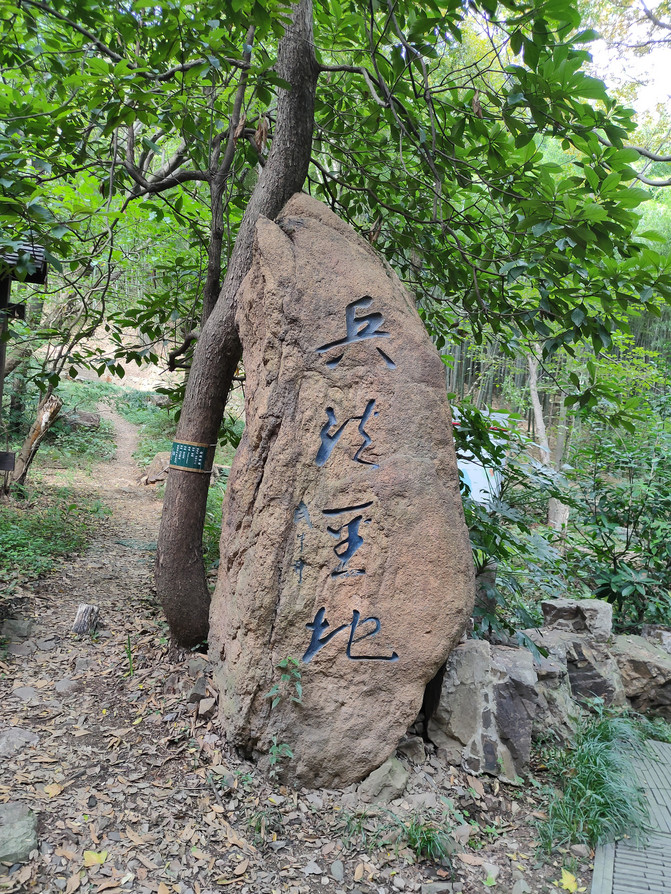





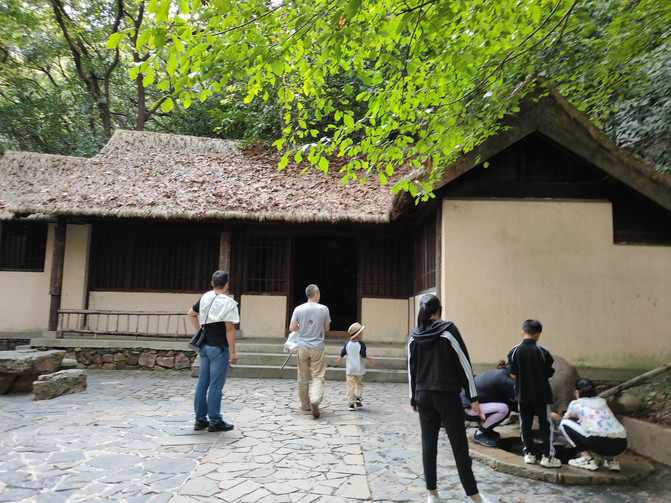


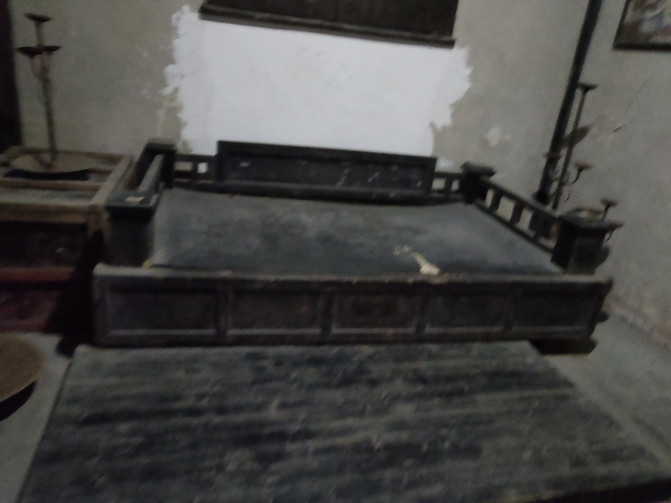





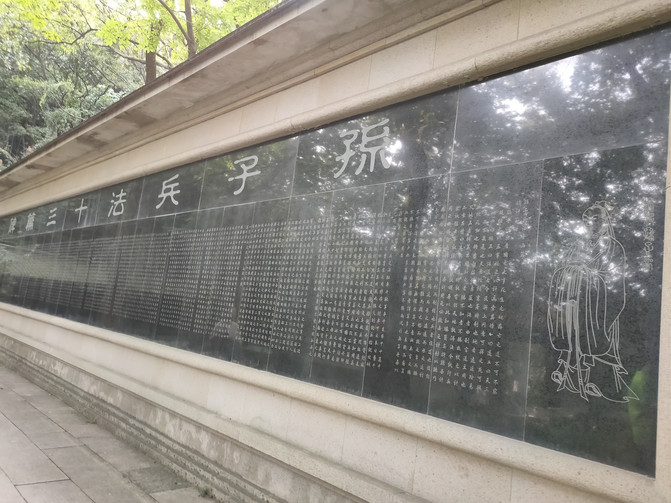

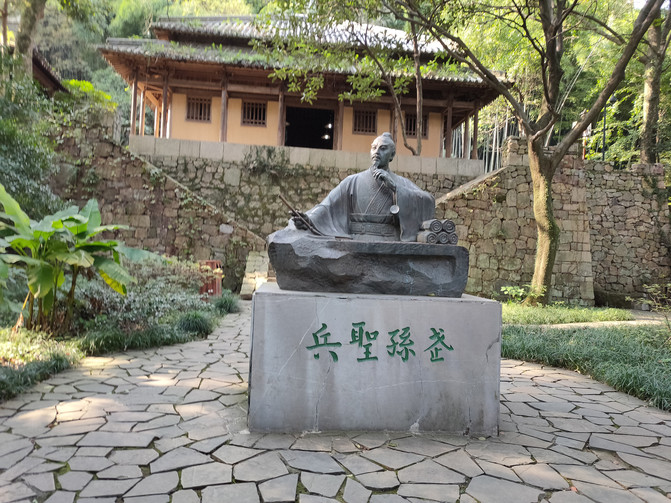









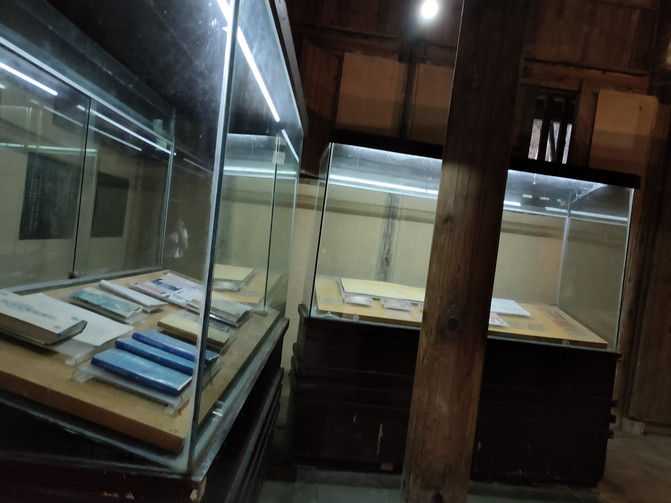

Previous Article:Yuhua Scenic Spot, Climb the Second Peak of Taihu Lake (Part 1)-Suzhou 3rd (2)
Next Article:Lingyan Mountain Temple, Guanwagong Heritage Park
